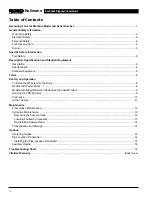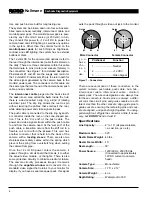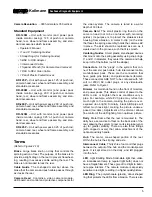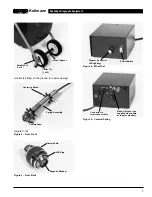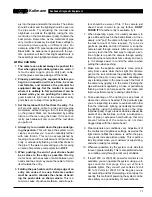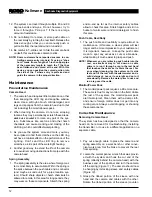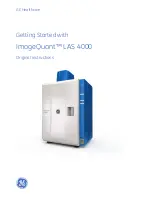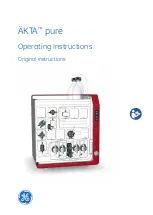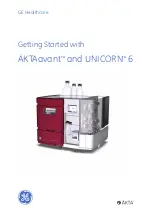
clockwise when camera is viewed from the rear) to
unscrew it from the camera. If it is difficult to turn,
get it started with a pair of pliers (Figure 13).
4. When the sleeve is completely unscrewed, slide it
down the black cord so that the actual connector is
exposed. Grasp the connector in one hand and pull
it straight out of the back of the camera. Wiggling
the connector slightly, side-to-side, may help break
it free (Figure 14).
Figure 11
The spanner wrench is hooked into the end of the
spring. The camera is then rotated (counter-clockwise
when viewed from front) with the other hand.
Figure 12
Once the camera head is removed from the spring,
the locking sleeve can be seen holding the connector
to the back of the camera. The safety cables are
mounted to a rotating portion of the sleeve, which
helps prevent their twisting.
Figure 13
The locking sleeve has been removed by the camera
back by rotating it counter-clockwise (when viewing
the camera from the back). The connector is now all
that holds the camera on.
Figure 14
The camera head is now removed. Note that these
connectors are the same style as those found through-
out the system.
Locating Faulted Components
The basic idea in troubleshooting the system is to use
the camera head to eliminate suspected components.
Here are the areas we will try to isolate the fault to:
camera head, reel/dolly, interconnect cord, monitor/-
power pack. As a scenario, we will assume that the
symptom is no video, no lights.
1. Remove the camera from the spring assembly.
2. With the monitor/power pack set up for operation,
plug the camera head directly into the back of the
monitor/power pack where the interconnect cable
is usually connected. Turn on the system and
check the monitor for a picture. If there is a good
picture with proper lighting, the problem is some-
where between the interconnect cable and the
spring assembly. Proceed to step 4. If there is no
picture, the problem is probably in the camera head
or monitor/power pack.
3. To virtually eliminate the monitor, play a tape on
your monitor with a VCR through the video in jack
at the rear (VCR – video out; monitor – video in). If
you get a good picture, it is almost certain the prob-
lem is in the camera head. The power pack is a lit-
tle more complicated to troubleshoot, so contact
Ridge Tool Company if you suspect it is faulted.
4. Plug the interconnect cable into the monitor/power-
pack. Unplug the other end of the interconnect
cable from where it plugs into the reel-hub, and
plug the camera head into this end. Turn on the
system and check the monitor. If you get the video
and lights back, the problem is likely in the push
cable or hub. If there is no picture, the interconnect
cable is the likely fault.
5. Once you suspect a component, contact Ridge Tool
Company Technical Services. We will establish a
plan of action to get your system back on line.
SeeSnake Diagnostic Equipment
Kollmann
13


